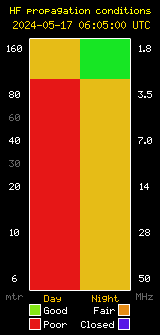Digital Mode and ATV Net Time Change?
Tonight on the Digital Mode and ATV Net we are going to request input from participants about the idea of changing the net times from 8:30 pm – 10 pm, to 8:00 pm to 9:30 pm. The original time was chosen back when there was another ATV net running in another county that ended at 8:30. After that net was over, some on those participants moved over to the SBARC ATV net. These days there is very little discussion (if any) about ATV, and much more about digital voice and special modes and the participants are mostly local club members. So there is no particular reason why we cannot start the net a little earlier and end a little earlier. It is the opinion of the net control that we may be able to attract more participants, and more participants can stay longer, if we start and end at a more convenient times. So what do you think? If you have any opinion on this please weigh in by leaving a comment below.










